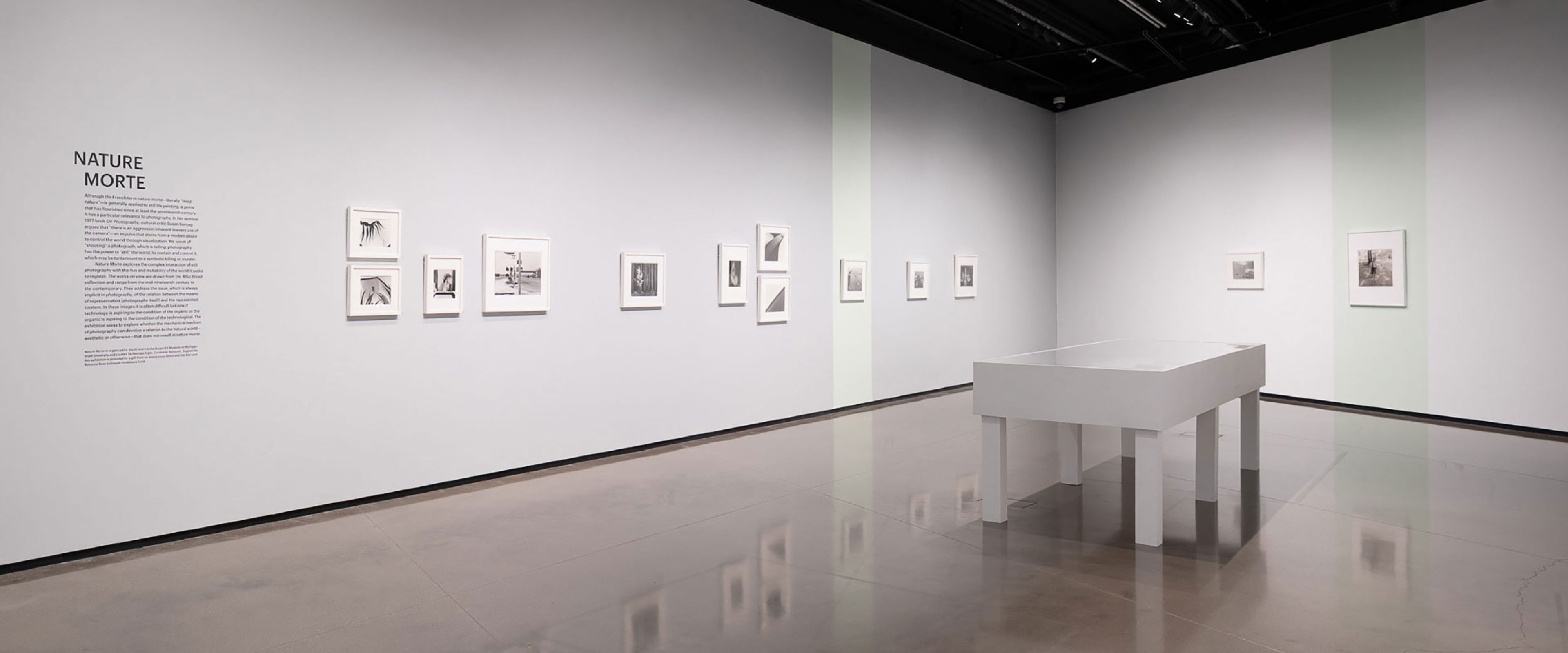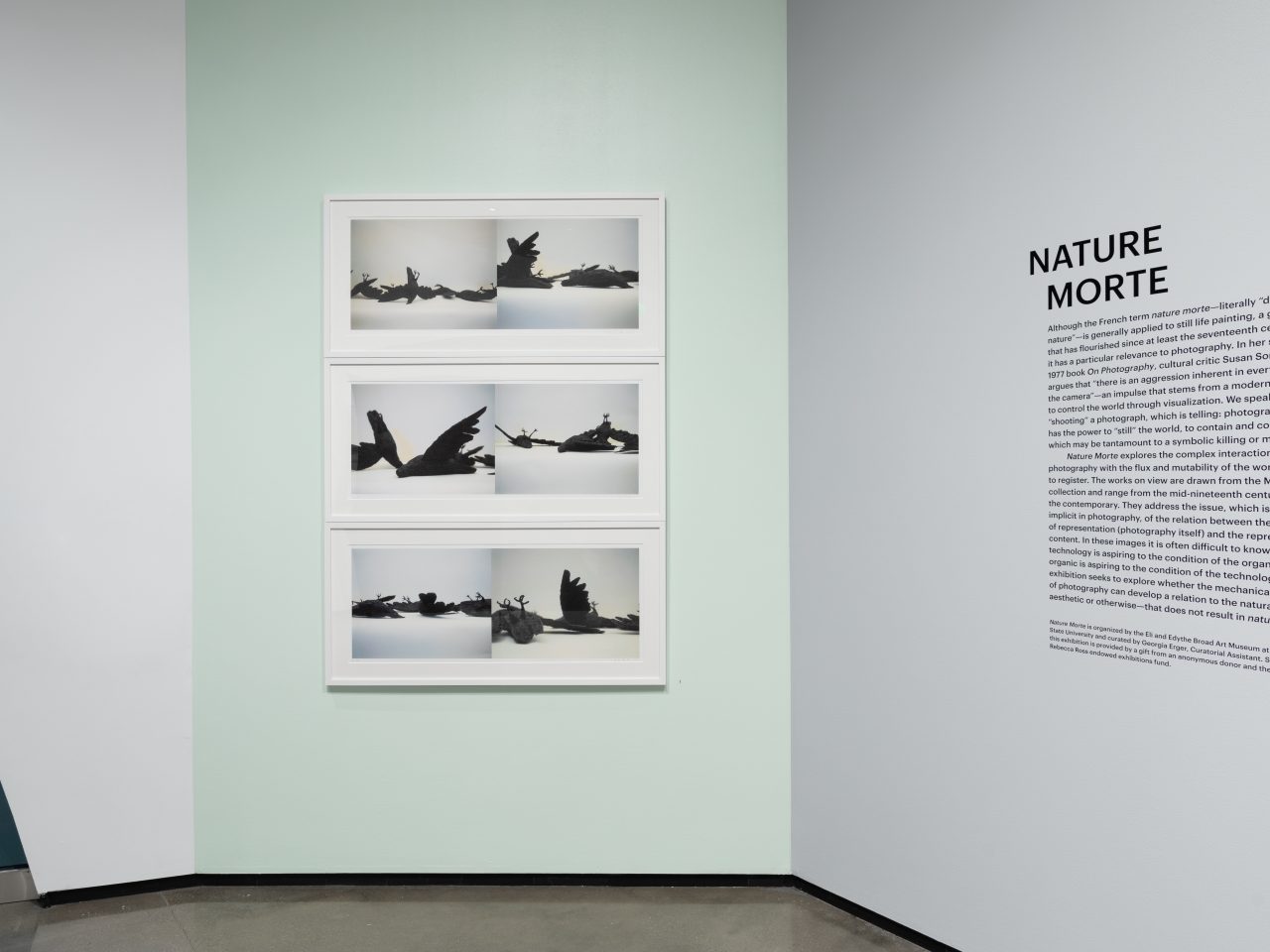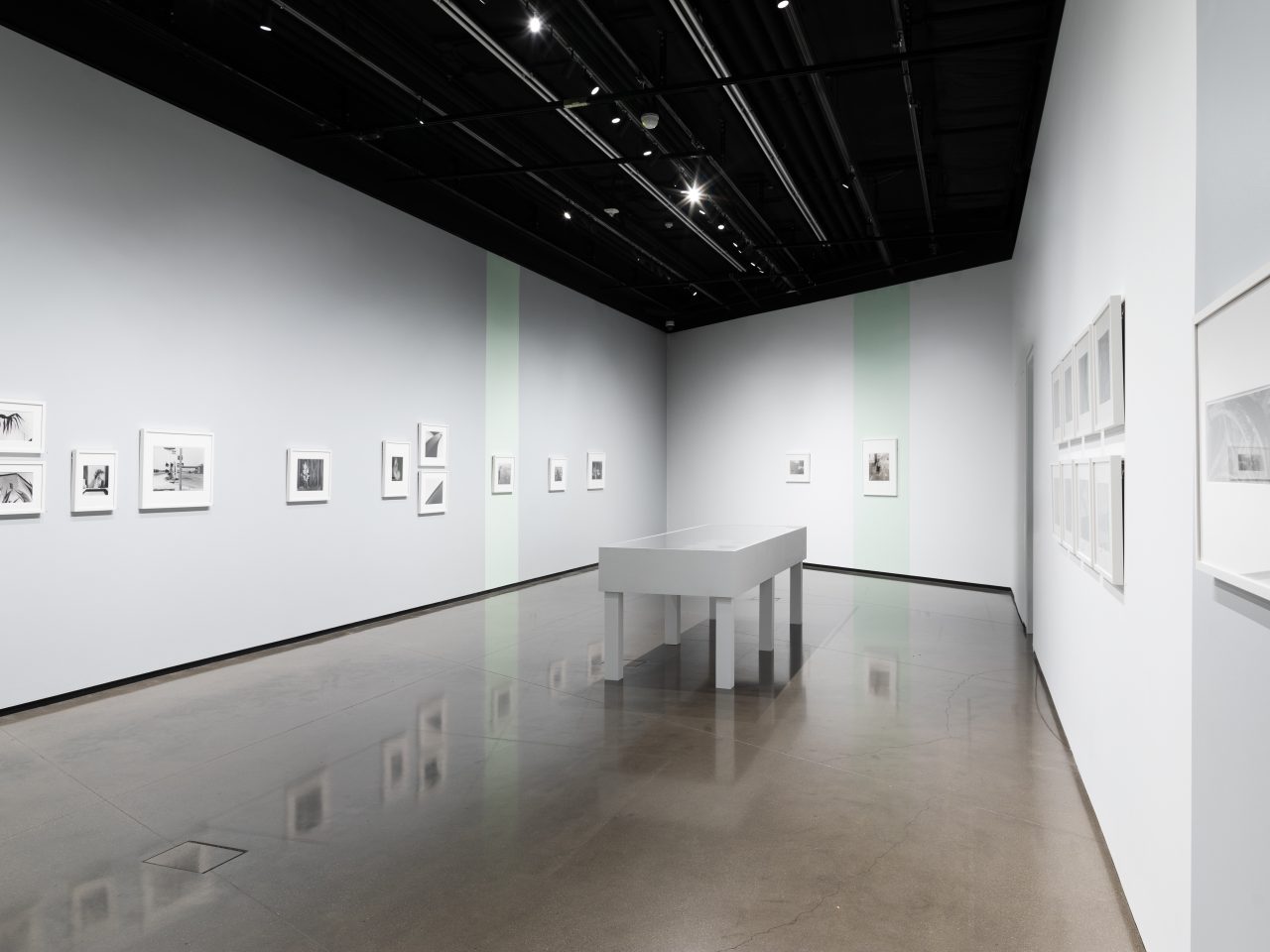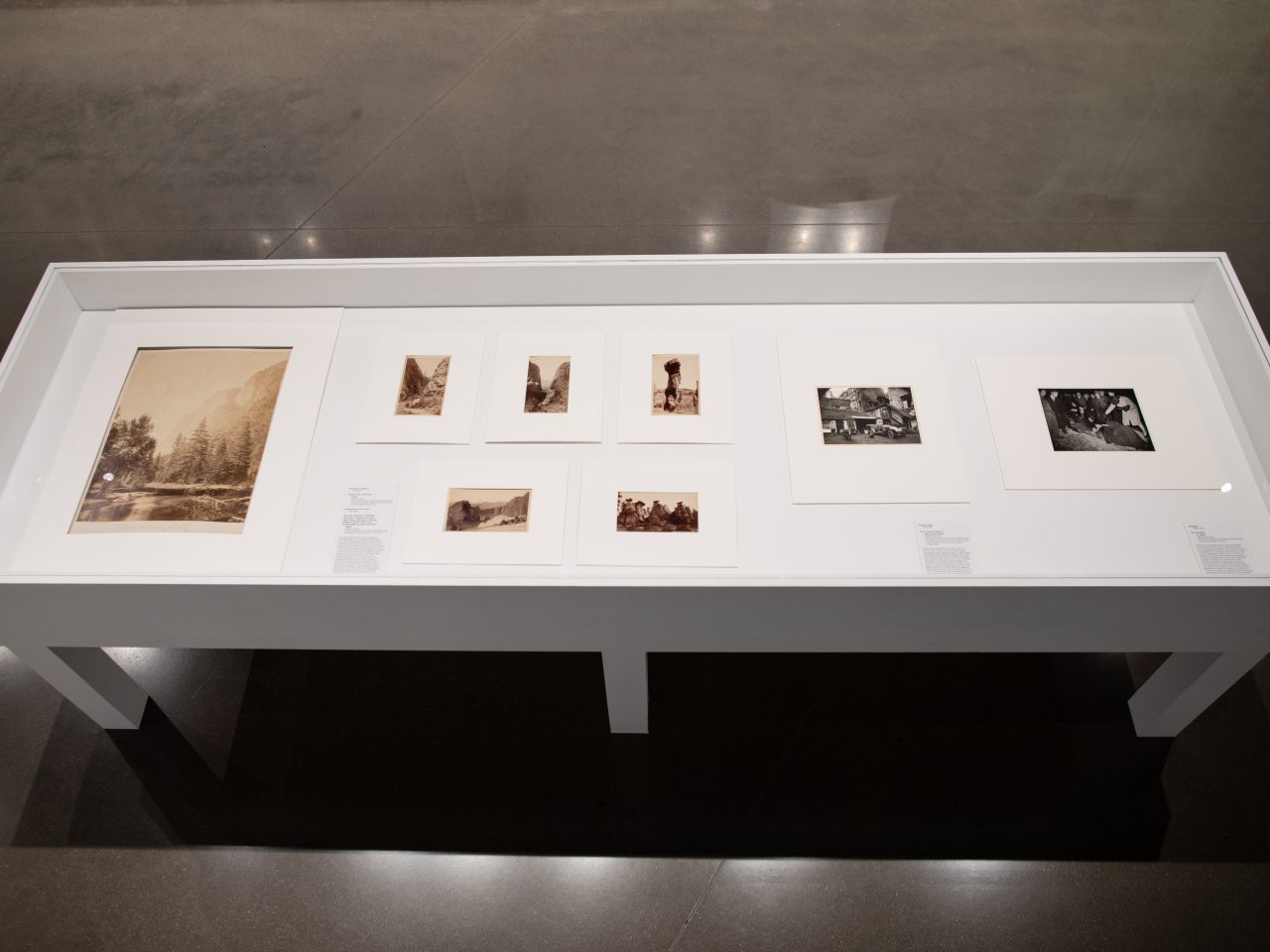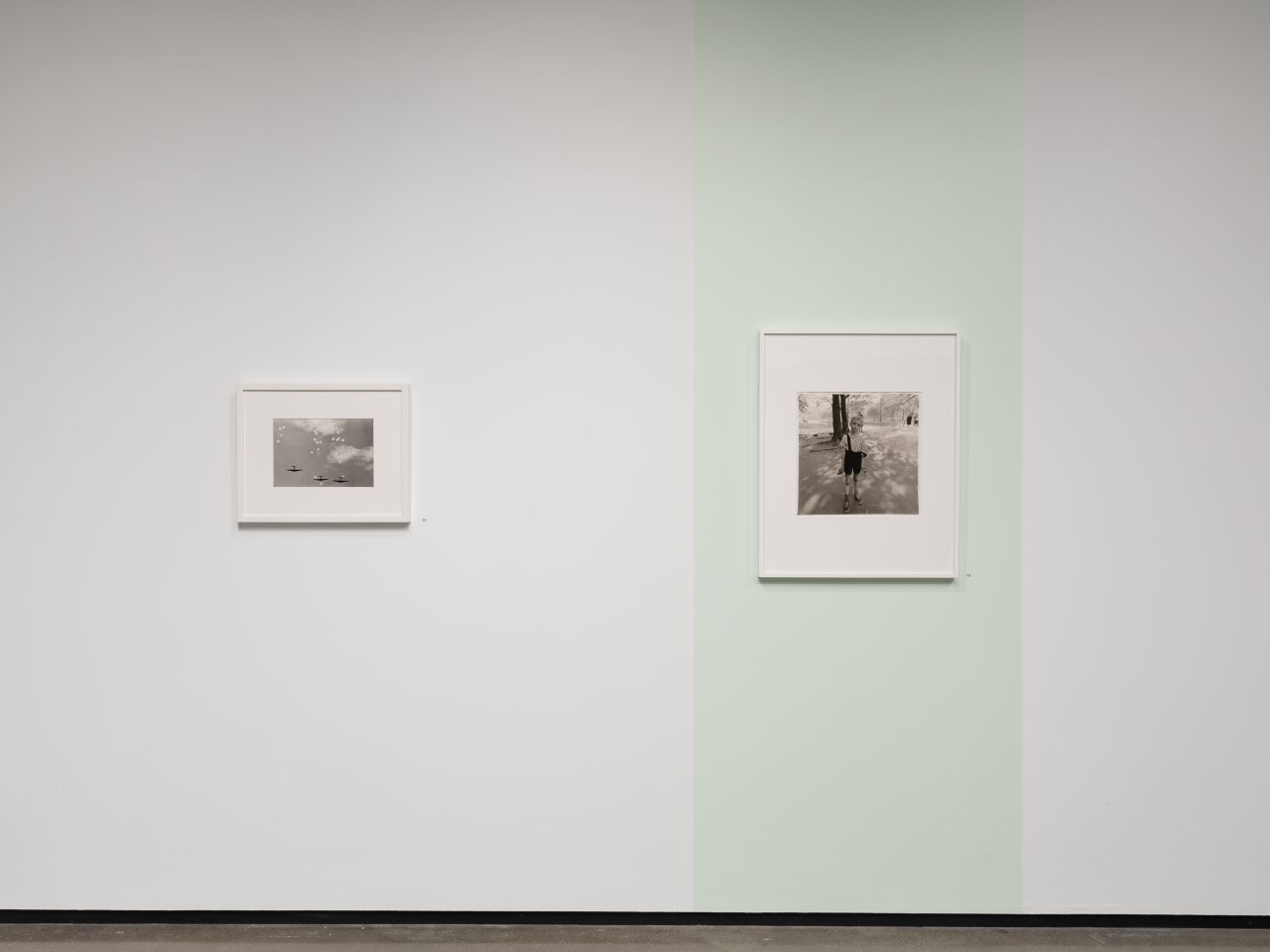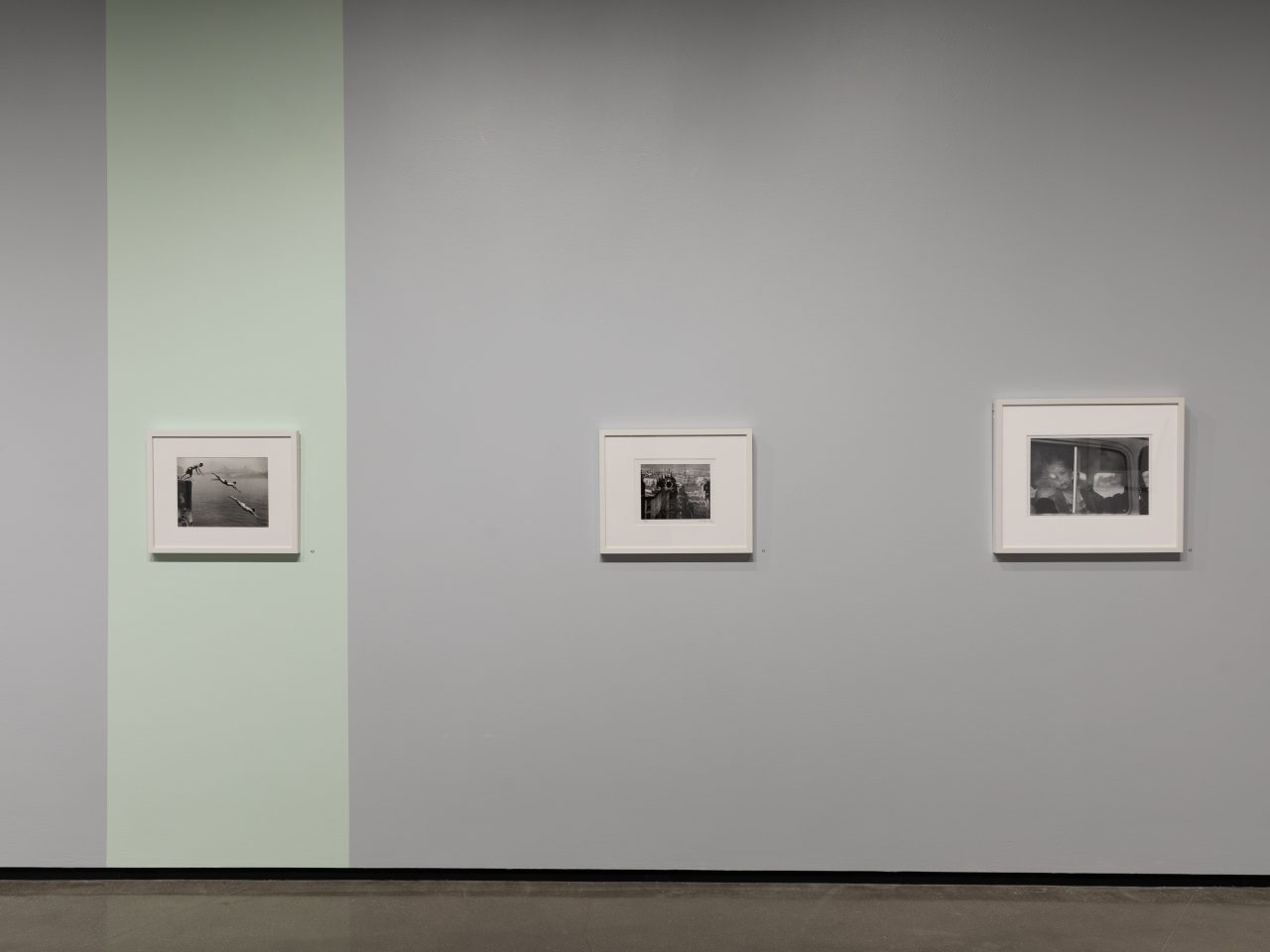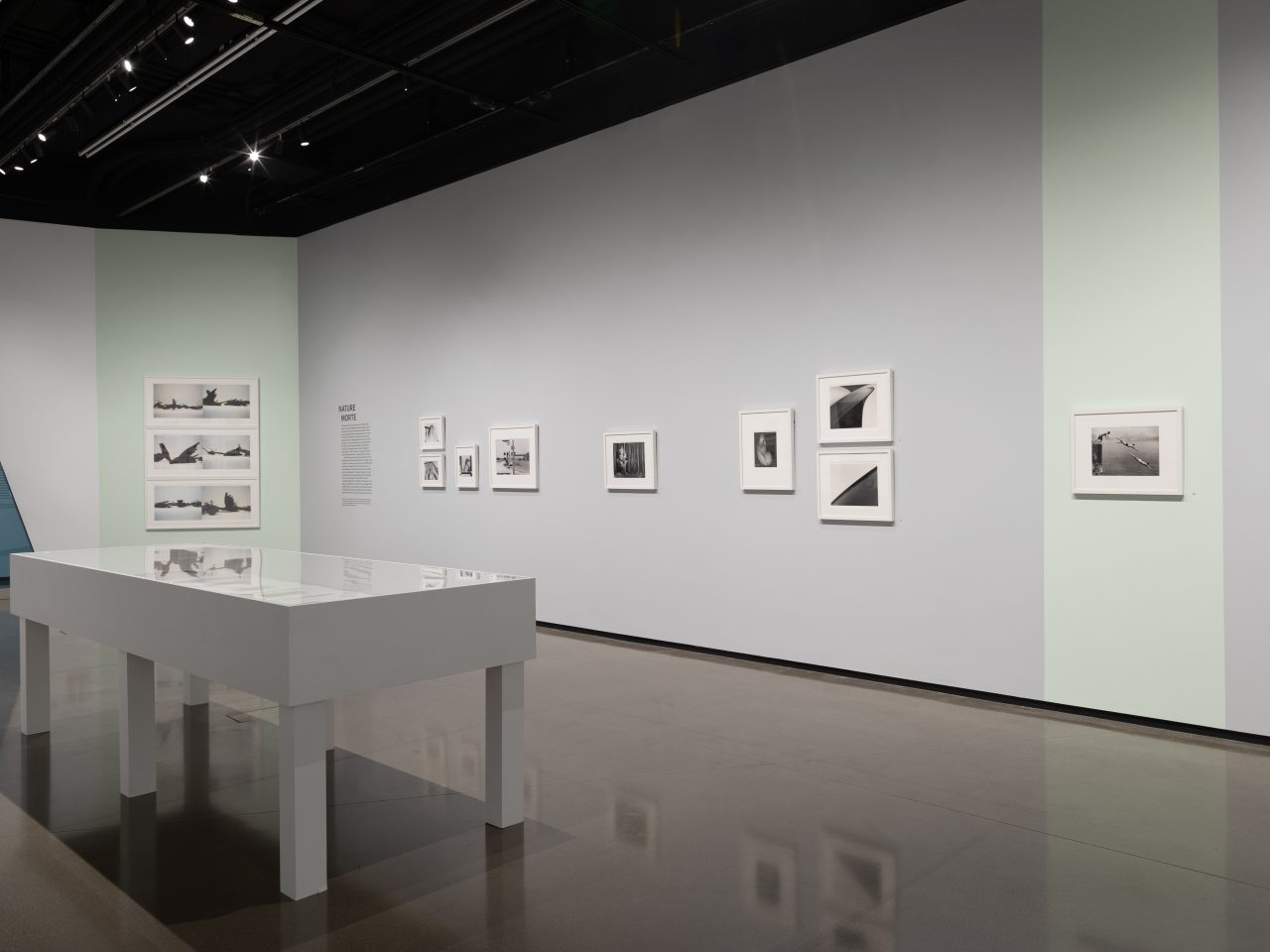Nature Morte is organized by the Eli and Edythe Broad Art Museum at Michigan State University and curated by Georgia Erger, Curatorial Assistant. Support for this exhibition is provided by a gift from an anonymous donor and the Alan and Rebecca Ross endowed exhibitions fund.
About the Exhibition
Although the French term nature morte—literally “dead nature”—is generally applied to still life painting, a genre that has flourished since at least the seventeenth century, it has a particular relevance to photography. In her seminal 1977 book On Photography, cultural critic Susan Sontag argues that “there is an aggression inherent in every use of the camera”—an impulse that stems from a modern desire to control the world through visualization. We speak of “shooting” a photograph, which is telling: photography has the power to “still” the world, to contain and control it, which may be tantamount to a symbolic killing or murder.
Nature Morte explores the complex interaction of still photography with the flux and mutability of the world it seeks to register. The works on view are drawn from the MSU Broad collection and range from the mid-nineteenth century to the contemporary. They address the issue, which is always implicit in photography, of the relation between the means of representation (photography itself) and the represented content. In these images it is often difficult to know if technology is aspiring to the condition of the organic or the organic is aspiring to the condition of the technological. The exhibition seeks to explore whether the mechanical medium of photography can develop a relation to the natural world—aesthetic or otherwise—that does not result in nature morte.
